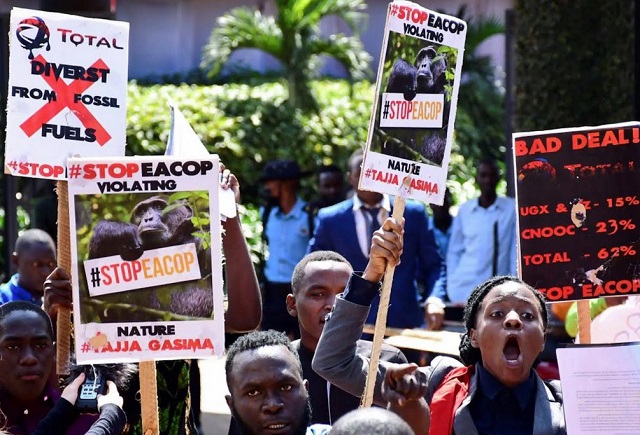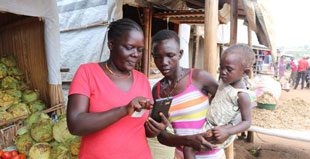
The entire African continent is responsible for just 3% of global carbon emissions. That figure is far lower when coal-intensive South Africa, the biggest carbon emitter in Africa, is excluded.
COMMENT | Twinamatsiko Mwesigye | African countries started gaining independence in the 1950s. By 1980, almost all of them except South Africa were under African rule. It was a period of great triumph as a people subjugated for centuries broke free of colonial chains and gained control of their affairs. Freedom was on the horizon.
At the same time, the iron curtain that divided the former second world war allies, the Soviet Union on one side and the NATO powers led by the USA on the other, was being pushed with ruthless passion. Their ideological confrontation would reverberate for decades in the global south, or what the politics of the era came to classify as The Third World.
Kwame Nkrumah, Ghana’s first post-independence leader had warned that political independence, or briefcase independence to use Walter Rodney’s term, was a sham, masking the older tenets of imperialism. Whereas African polities had achieved self-rule, the argument went, their economy’s independence hadn’t been guaranteed: The structural imbalance at the heart of the capitalist design wasn’t altered.
African countries had been haphazardly designed, without consideration of pre-existing social-economic structures, to serve the material needs of the imperial core, the post-independence governments were expected to maintain the inherited material structures or else face the wrath of the empire, this time with the USA at the helm following the Suez canal crisis of 1956.
The organisations in the global south formed to imagine a different kind of statehood were frustrated under the pretext of curtailing the red star of the Soviet Union or the ill winds of Maoist China, from engulfing the democratising global south, read the empire’s strategic sphere of influence. From the Non-aligned movement to the Organisation of African Unity to the bold domestic policies of far-sighted leaders that tried to restructure their economies, the Anglo-American interests took centre stage, flexing their muscles no matter the cost.
In the DRC, Patrice Lumumba was assassinated, in Uganda, Milton Obote was ousted in a coup just a year after the Nakivubo declaration and in Burkinafaso, Thomas Sankara was eliminated. On the economic front; a macroeconomic crisis, a corrupt rentier class, and fierce global competition reduced African lives to pieces on a grand chessboard to use the title of the book of American cold war architect Zbigniew Brzezinski.
This was happening as the neo-Malthusian ideology was starting to dominate national security discussions in the USA. In 1974, the White House issued a National security council study memorandum 200 (NSSM 200) on the implications of worldwide population growth for US security and overseas interests. The document argued, among other things, that population expansion in select developing countries which also contain key strategic resources necessary to the US economy posed potential national security threats. It warned that under pressure from an expanding domestic population, countries with needed raw materials will tend to demand better prices and higher terms of trade for their exports. Three African countries were on the list; Egypt, Ethiopia and Nigeria. The consensus was simple: no need for FDI.
This coinciding with the Oil shocks of the 1970s, committed African nations to a complete hell of a decade characterised by galloping inflation, unemployment, and a balance of payments crisis, culminating in the 1980s debt crisis that saw developing countries default and the monstrous debt restructuring programs.
With no capital in reserves for most developing nations, came the noble Washington consensus championed by the Bretton Woods institutions, IMF and World Bank, following the fall of the Berlin wall. The prescription was simple: slash domestic imports, cut the national budget, especially on subsidies for essential necessities, devalue the national currency to make the exports attractive on the international market and deregulate. This was followed by the era of renewed globalisation with the World Trade Organisation at the helm. Taken for a ride, the boat to prosperity became catchwords related to the global development that was restructuring global economies, at least in Asia.
But from the start, the game was always rigged. There were concerns that the financialised global capitalism and the deregulation policies plus the structure of financial markets were only making the rich richer. The 1997 Asian economic crisis proved this the hard way. Also highlighted were the patent and copyright monopolies, a case we saw recently with the covid pandemic and calls for vaccine justice.
However, on the global stage, it was clear by mid-2000, that the Washington Consensus had failed. Capital, with respect to Africa, had become a Mystery, to paraphrase Peruvian economist Henado de Soto (ignore the myths of his argument: property titles as a precursor to the success of capitalism in the developing world). Although the flying geese model had delivered tremendous economic returns in Asia (ignore the Mystics vs Fundamentalists debate over the HPAEs growth miracle), pushing Japan to break the United States sixty years record to reach industrialised status, Africa could only miss out. It took Japan thirty-five years to double its GDP, South Korea eleven years, using the same model, and China only nine years to double and sixteen years to grow its GDP sixteenfold.
Africa could only look on, as the Empire’s paper, The Economist declared in its 2000 issue, it was “The hopeless Continent” while the OECD countries gathered in the capitals of capital to discuss the problem of HIPCS (Highly Indebted Poor Countries) of which African countries constituted the majority. True to their creed, they came up with such dubious policies as Microcredit adopted from Bangladesh’s Mohamad Yunus’ Grameen Bank. At the same time, their ivy league Professors debated whether Institutions mattered more as in Acemoglu-Robinson or is it more Aid as in Paul Collier, the architect behind the Millenium Development Goals. The on-ground truth was that the continent’s manufacturing capacity had fallen over the decades since independence to the current 1.9% of global manufacturing (Note: that’s impressive compared to the early 2000s) constituting 18% of our exports. People were dying of hunger, unemployment was high, and economies were cash-strapped.
But By 2006, when the first Africa China Summit was held, Africa’s place in the global supply chain was being revisited, and by 2015, the narrative had shifted to Africa Rising with the so-called African Lion economies in the driving seat. China’s sustained impressive double-digit economic growth, and stable commodity prices for over a decade had led to a proliferation of Chinese firms and capital in Africa. BRICS, an economic group that brings together South Africa, China, India, Brazil, and Russia championed a different economic model that put Manufacturing, and infrastructure development at the centre, in stark contrast with the Western world’s conditions-infested development policies.
As western policymakers covered themselves under such narratives as China’s debt trap diplomacy in Africa, choosing Howard French’s China’s Second Continent over the sober analysis of Deborah Brautigam in The Dragon’s Gift, China’s FDI in Africa skyrocketed, relations strengthened, massive infrastructural projects mushroomed and Africa’s energy needs became abundant. As AFDB succinctly puts it, for Africa to create jobs and promote inclusive economic transformation, it must capitalise on its resources and labour through domestic manufacturing, commodity-based industrialisation, and develop forward and backward linkages to the regional and international value chains, but the path to achieving this goal in Uganda is now being hampered yet again by the western world.
In April 2022, as the US Interior department issued fresh leases for oil extraction in the Gulf of Mexico, Alaska game reserve was receiving oil companies, Ursula von der lyen, European Commission President was boarding a plane to Baku in Azerbaijan to work on the expansion of a gas pipeline that will help diversify EU’s energy supplies, the UK was getting back at fracking, and Canada’s dirtiest oil sands were increasing production, the NewYork Times ran an article by Uganda’s climate activist and the lead face behind the StopEacop campaign, Vanessa Nakatte in which she claimed that Uganda doesn’t need the oil in the Albertine region and more so that the EastAfrican Crude Oil Pipeline (EACOP) which will transport crude oil from Hoima in Uganda to Tanga in Tanzania for export to the international markets was unnecessary and would only undermine the world’s goal to achieve net-zero carbon.
The Arguments for the StopEacop as analysed from their several articles and their website can be categorised under four major themes; That the project amounts to corporate colonialism, it will increase greenhouse gas emissions, it’s anti-nature and therefore anti-people, and the classic case of resource revenue mismanagement.
The first argument isn’t wrong, but neither is it new. As the discussion above shows, African countries struggle with capital and financial capacity largely because of the structure of the capitalist system. But if indeed, the activists cared about the sad nature of our financial situation they would have campaigned against the shameless repatriation of profits by foreign banks. The deal between Uganda and International oil companies was negotiated in the best way possible i.e, navigating the structural imbalances to have a share of the cake. Secondly, the industry will provide jobs and skills to Ugandan workers under the local content development scheme, technology transfer, employment opportunities e.t.c.
The second argument is equally absurd. The entire African continent is responsible for just 3% of global carbon emissions. That figure is far lower when coal-intensive South Africa, the biggest carbon emitter in Africa, is excluded. The average European uses more than six times as much electricity as the average African consumer. We are energy poor with an abysmal carbon footprint to even be mentioned. On that, we shouldn’t even go there.
The third and fourth arguments are what summarise the thinking of the StopEacop Army. Sitting in their gas-powered homes in Europe with unflinching electricity supply and low gasoline and diesel prices, as their economies realistically transition to green energy, they garner the audacity to lecture us and frustrate energy development in Africa. The sad truth that even African allies in the fight against Eacop refuse to acknowledge is that Africa is treated as a backward continent with no capacity and even needs to exploit its resources. Over time, our continent and EastAfrica in particular have been reduced to a wild destination for the Western leisure class. Our destitution is secondary. Their visual satisfaction is primary. But the fact is that we need to focus on our energy needs, which are rapidly increasing and how we can position our economies for the energy transition. If all economies tend towards full employment, oil and gas are still the most important engines that can fuel that transformation.
Our world today depends on fossil fuels for more than 80% of its energy needs. And even the most radical IEA’s (International Energy Agency) estimates show that the world will still be using 72% of fossil fuels for its energy needs by 2040. But it is much different down here where millions have no access to commercial energy. And worse still, there is no political and economic consensus on how to achieve net zero carbon because countries do not share the same set of problems.
The available consensus even among the Degrowthers (read Hickel), is that the energy transition cannot happen rapidly, nor can it be wholly universal because of our present different material needs. As the past recorded history on the global economic development path has proved, developing countries will need immense energy to catch up with modern economies and to meet their infrastructural and consumer needs. For example, if the developing countries are to replicate the Chinese experience, and become the next factory of the world while uplifting millions of people out of poverty, it will require, according to Smil Vaclav, a 15-fold increase in steel output, a more than 10-fold boost for cement production, a more than doubling of Ammonia synthesis and a more than 30-fold increase of plastic syntheses. This is much needed for our infrastructure, and food to feed our hungry population, and all of these require immense fossil fuels input. The hard truth is that even green electricity generation like wind turbines, or lithium batteries still rely on materials from fossil fuels.
It is indisputable that we are transgressing safe planetary boundaries since the 2014 IPCC report made a clarion call for quick intervention prompting measures at the Cop21 meeting in Paris. The framers were conscious enough to propose that each country come up with Nationally Determined Contributions (NDCs) to reduce emissions and mitigate climate change. Western nations also promised to provide $100bn by 2020 to developing countries to fast-track the energy transition. However, by the time the European Union passed its African strategy, Global Gateway, the promises were forgotten; the declarations were more of commands than calls for participation, rooted in their geostrategic needs of which the green revolution is brilliantly married.
Therefore, it is hard to overstate the importance of exploitation of our natural resources given the task ahead of us to lift ourselves from the shackles of poverty. And, with the projected increase in population, urbanisation, infrastructure and consumer goods demand, we need to act very fast using our available feasible means to achieve energy security. Without a robust policy like the Marshall plan that America used to lift Europe from the ruins of the Second World War, Africa can rely on itself to uplift its people while realistically transitioning toward green energy.
*****
Twinamatsiko Mwesigye is a journalist
 The Independent Uganda: You get the Truth we Pay the Price
The Independent Uganda: You get the Truth we Pay the Price



